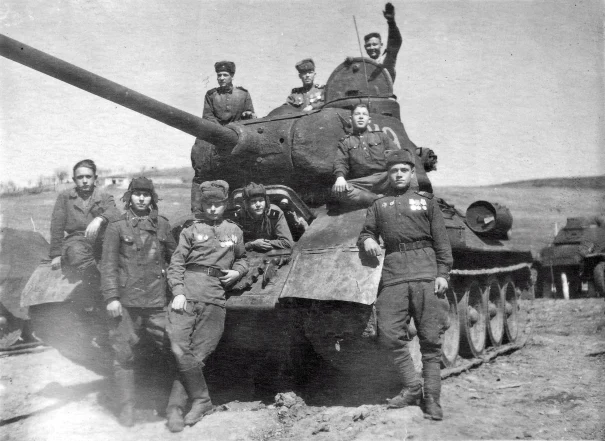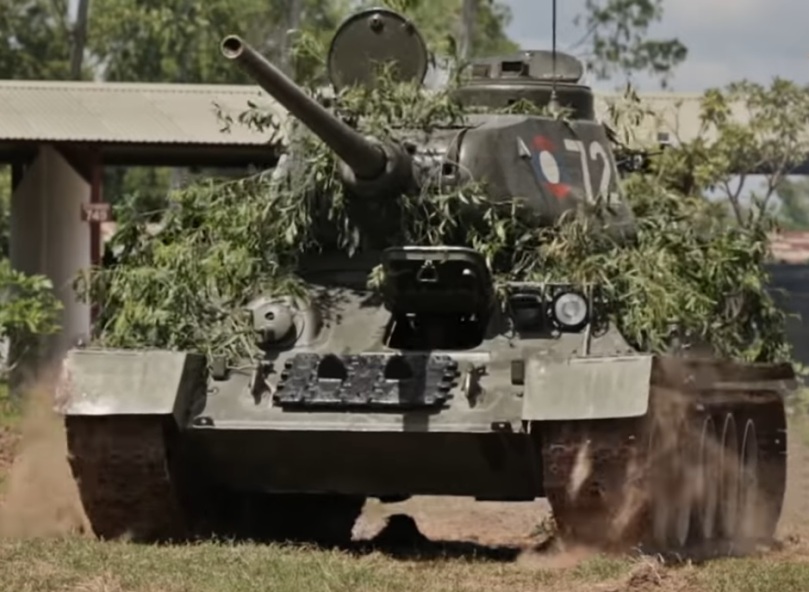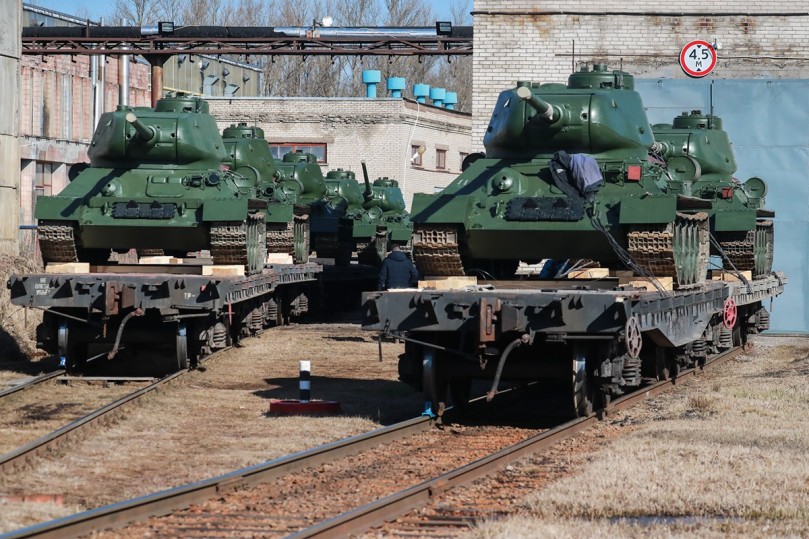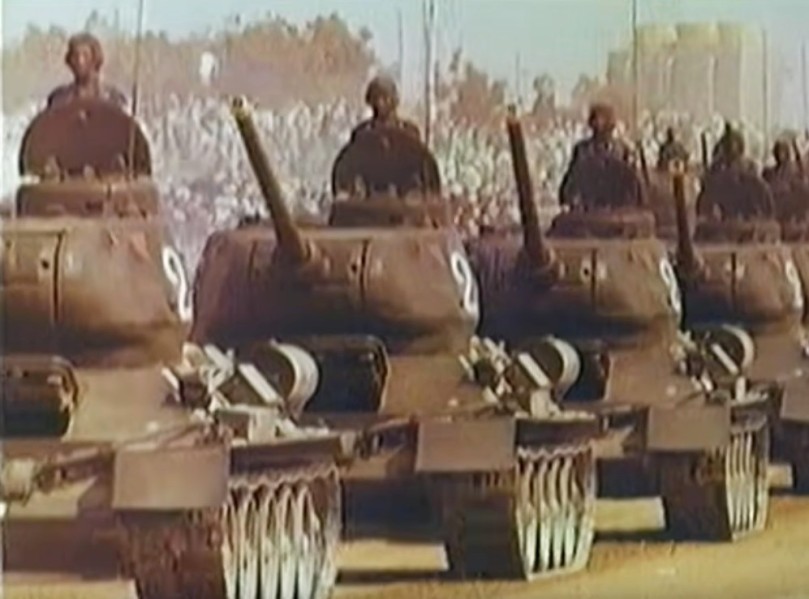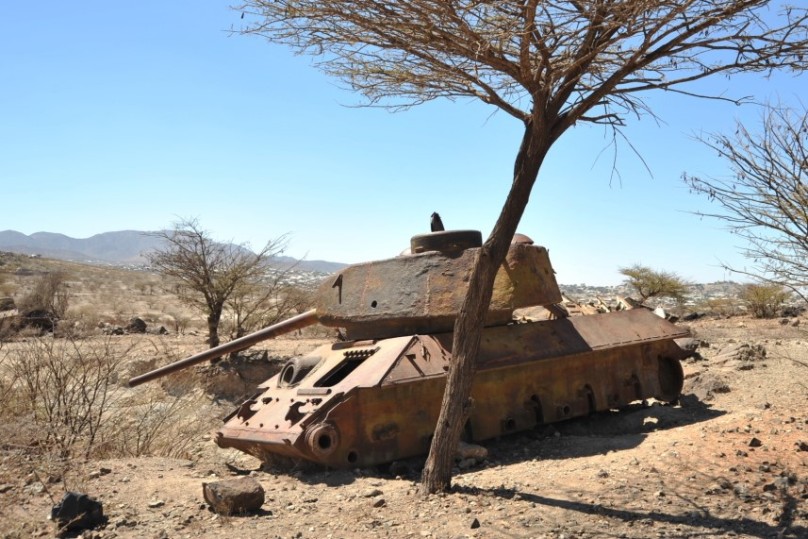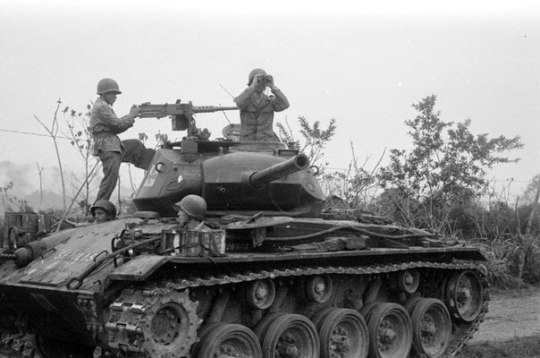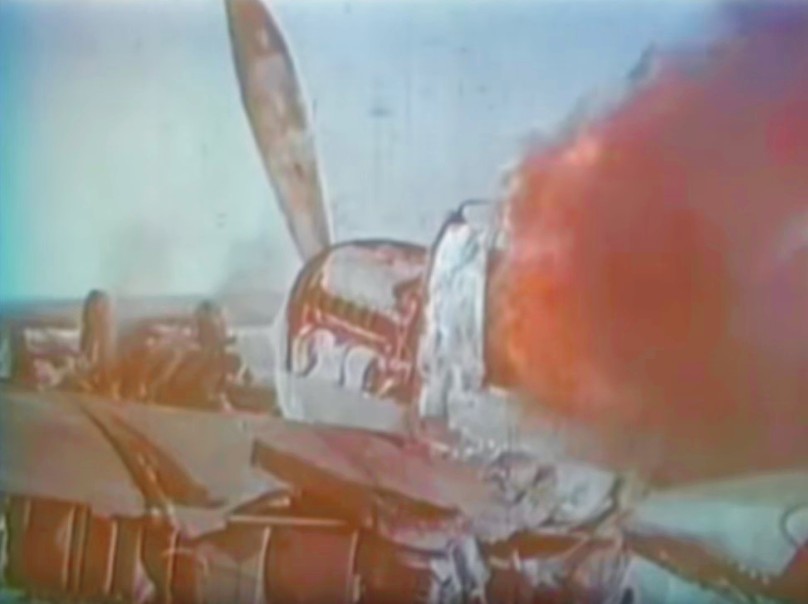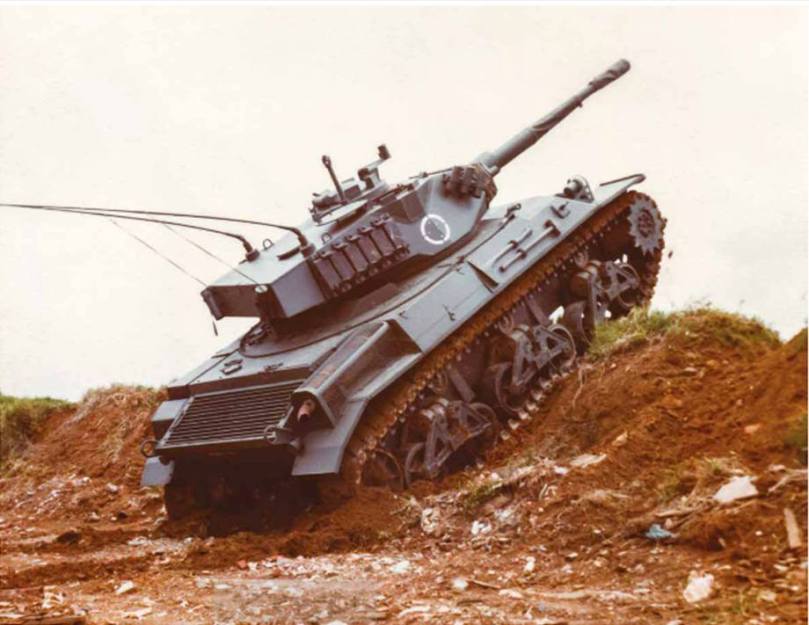Depending where a person might be reading this, the 1969 conflict between El Salvador and Honduras is called Guerra de las Cien Horas (100 Hours War), the Fútbol War, or the Soccer War.
Beyond the (often incorrect) cause cited, this war is famous for the dogfights between Mustangs and Corsairs. A quarter-century after WWII ended, this would be the final time that WWII fighter planes would ever meet in the skies anywhere.
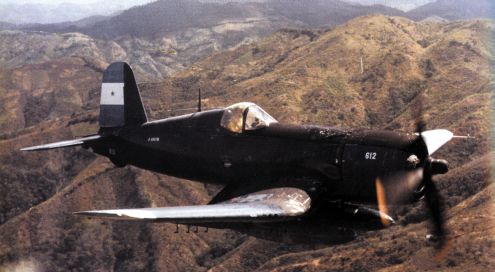
(Honduran Corsair)
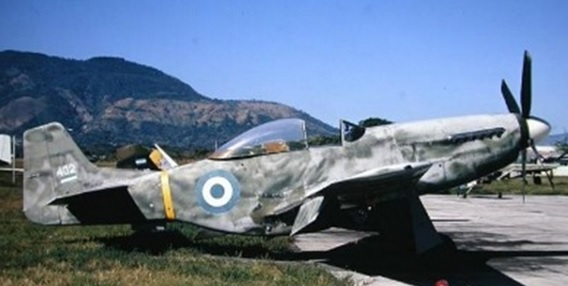
(Salvadoran Mustang)
By now the air aspect of the conflict is beaten to death; indeed there are entire books covering it. On the other hand little is usually said about the war’s ground fighting, which included WWII-vintage M3 Stuart tanks.
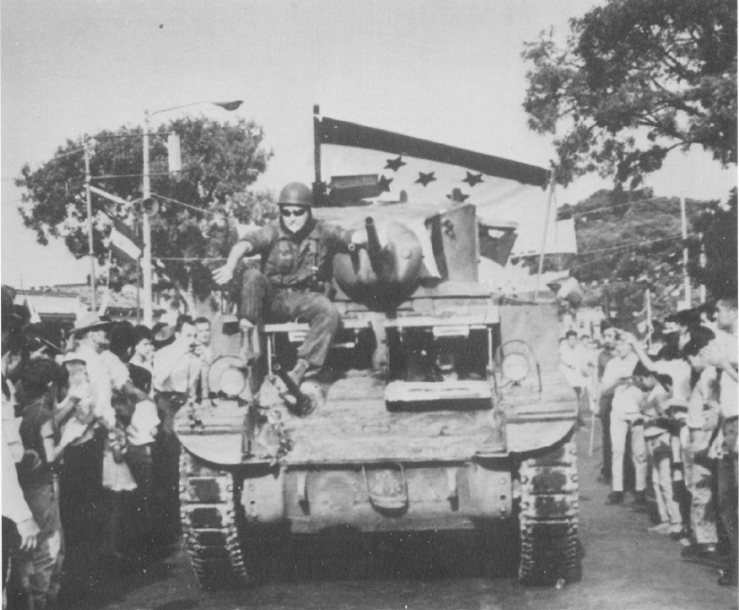
(Salvadoran M3A1 Stuart tank parading a captured Honduran flag during 1969.)

